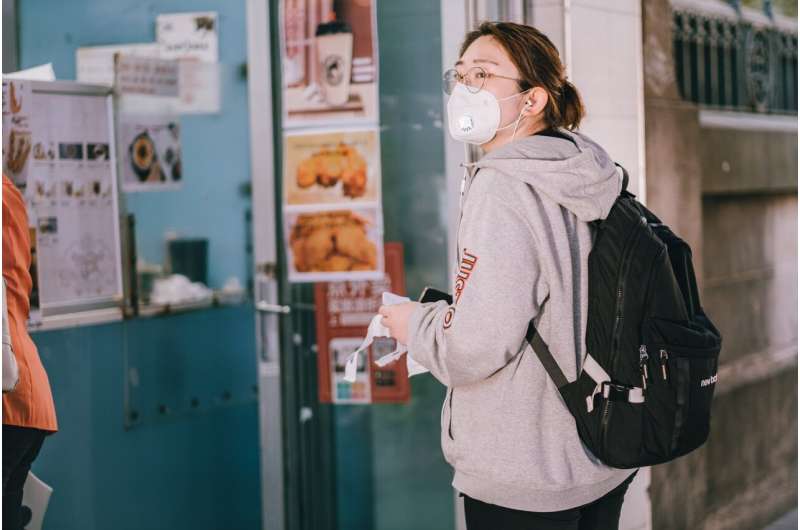
The number of daily contacts changed over the course of 2020, following the first lockdown, corresponding to alterations in the COVID-19 guidance, suggests a study among staff and students at the University of Bristol. The research led by scientists at the University of Bristol is published on the pre-print server medRxiv.org.
CONQUEST (COroNavirus QUESTionnaire) is an online survey of contacts, behavior, and potential SARS-Cov-2 symptoms for University of Bristol staff and students. The questionnaire was set-up to measure changing behavior and contact patterns during this unprecedented time, in order to predict how COVID-19 will spread in universities settings.
The online survey, which went live on 23 June 2020, investigated whether there were differences in contact patterns for University staff and students during four different COVID-19 guidance periods: the period following the first lockdown (23 June—3 July 2020); the relaxed guidance period (4 July—13 September 2020); “rule-of-six” period (14 August—4 November 2020); and the second lockdown (5 November—24 November 2020). There was a reduction in the number of contacts during the second lockdown, returning them to the levels in the period after the first UK lockdown.
The study included 4,199 responses from staff and 1,906 from students. For staff, median contacts remained low throughout the analysis period but were higher in the relaxed guidance and the “rule-of-six” periods than the period following the first lockdown and the second lockdown period when guidance was stricter. Mean contacts were higher during the weeks in these two middle periods, usually varying between four to six contacts per day but were around three contacts per day in the weeks during the post-lockdown and second lockdown periods. The differences between the median and means were due to some individuals reporting many contacts.
For students, there were few responses until October 2020 when a University-wide mass communications campaign was launched to recruit participants to the survey. After 5 November 2020, when student response was high with 1,452 participants, each week the median was two contacts per day and the mean was around six or seven contacts, until the second lockdown when it dropped to around three contacts per day.
Additionally, the research has shown that on average there was high adherence to the guidance throughout the survey period for both staff and students, with few people meeting in groups larger than six, despite many students living in large households.
Dr. Adam Trickey, Senior Research Associate in the Bristol Medical School: Population Health Sciences, said: “Our analysis highlights the importance of measuring contact patterns in real-time. We have more responses from staff than from students, yet students are critical to understanding how SARS-CoV-2 will spread in a university setting. We are calling for more University of Bristol students to participate in the online survey.”
He continued: “Compared to daily contact numbers reported in other UK studies before the COVID-19 outbreak, our study found University of Bristol staff and student contacts were lower throughout the survey period, particularly during the second lockdown, which possibly indicates that COVID-19 guidance measures successfully worked to reduce numbers of contacts.”
The study is important for several reasons. Firstly, it comes at a unique time when a third national lockdown has been implemented to reduce contacts between individuals. However, the number of reported daily cases of COVID-19 is still high. Bristol went into the second lockdown covered by this study in the lowest tier of COVID-19 restrictions and came out in—as with much of the country—in the highest tier.
Secondly, the setting is important due to its uniqueness, as universities were allowed to carry on teaching throughout the lockdown, meaning that large gatherings of people were still allowed—also notable due to the high prevalence of COVID-19 among students and their potential for high numbers of contacts due to their large household sizes.
As well as its uniqueness, the setting is also important as university staff are representative in age structure of many working age populations. It is important to be able to understand the effect of the COVID-19 guidance changes, particularly lockdowns, on people’s behavior, as another lockdown might be needed in the COVID-19 pandemic or for any future pandemics that could occur.
Source: Read Full Article
